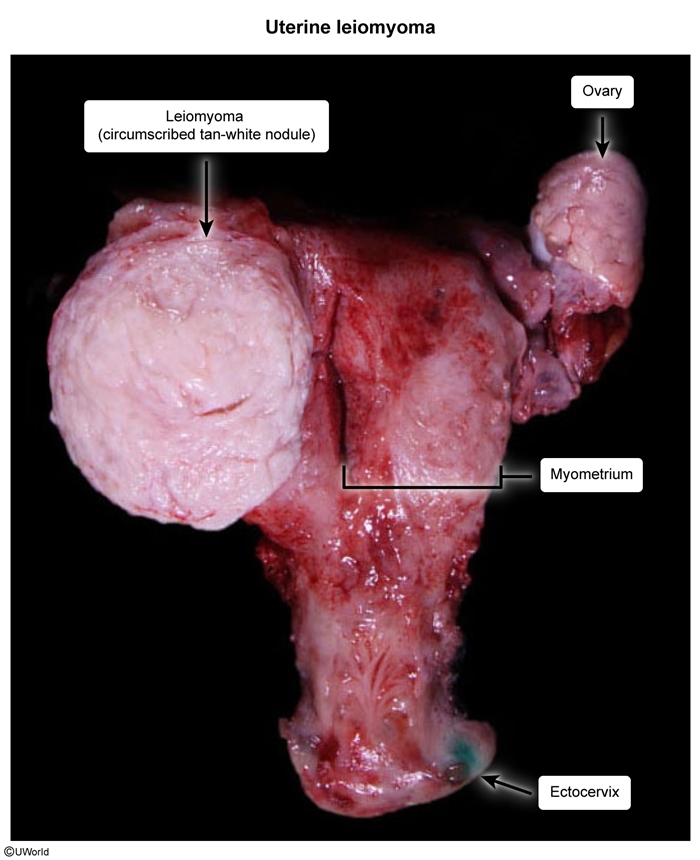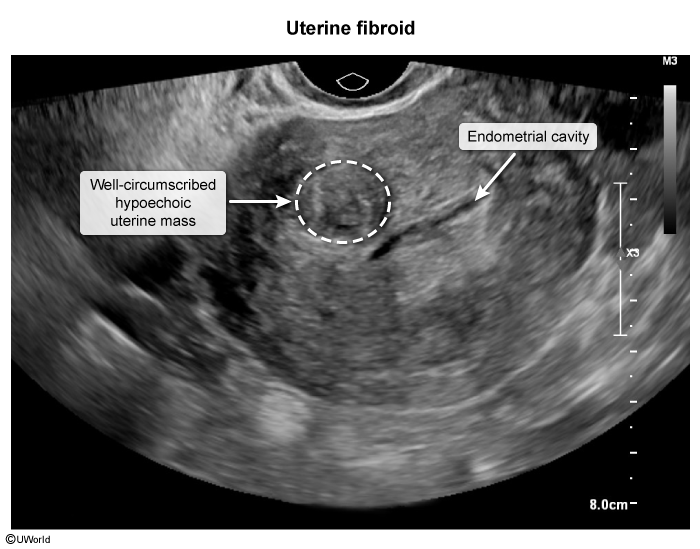Uterine Fibroids
Article Sections
Introduction
Uterine fibroids, also known as leiomyomas or myomas, are benign smooth muscle tumors of the uterus. They are the most common pelvic tumors in women and can vary in size, number, and location within the uterus. Many patients with fibroids are asymptomatic, but those with symptoms can have abnormal uterine bleeding, bulk symptoms, or issues with reproductive function.
Pathophysiology
Fibroids are common benign tumors arising from the monoclonal proliferation of myocytes and fibroblasts that can grow to a variety of sizes and in various locations within the uterine myometrium. Fibroid proliferation appears to be influenced by environmental and reproductive factors (eg, pregnancy, obesity) that increase estrogen levels (ie, fibroids are estrogen-dependent tumors).
As fibroids grow in size and number, they can be associated with a variety of symptoms. Heavy menstrual bleeding, the most common symptom, may result from impaired uterine contractility, increased uterine surface area (due to uterine cavity distortion), and ulceration of the endometrium. In addition, biochemical vasoactive growth factors expressed by fibroids cause venous ectasia (dilation). During menstrual shedding, the large-caliber venules overwhelm normal hemostatic mechanisms (platelet aggregation, fibrin deposition, thrombus formation) that control menstrual blood loss.
Continue Learning with UWorld
Get the full Uterine Fibroids article plus rich visuals, real-world cases, and in-depth insights from medical experts, all available through the UWorld Medical Library.
Figures
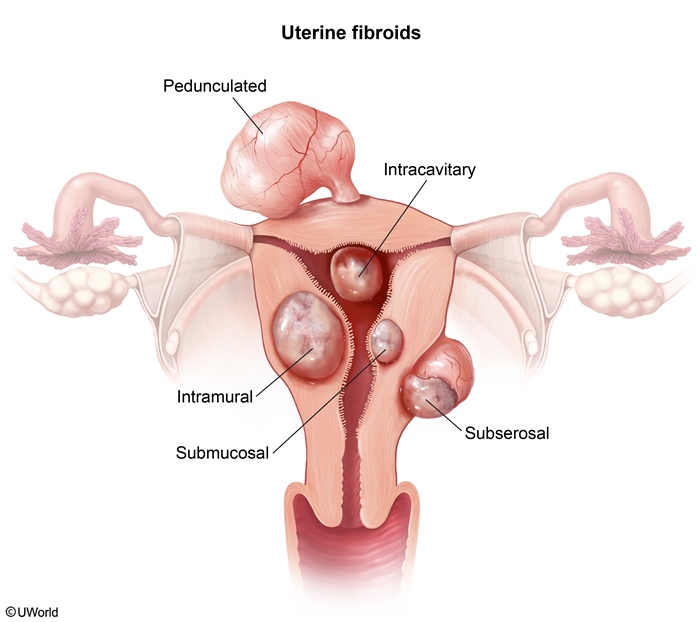
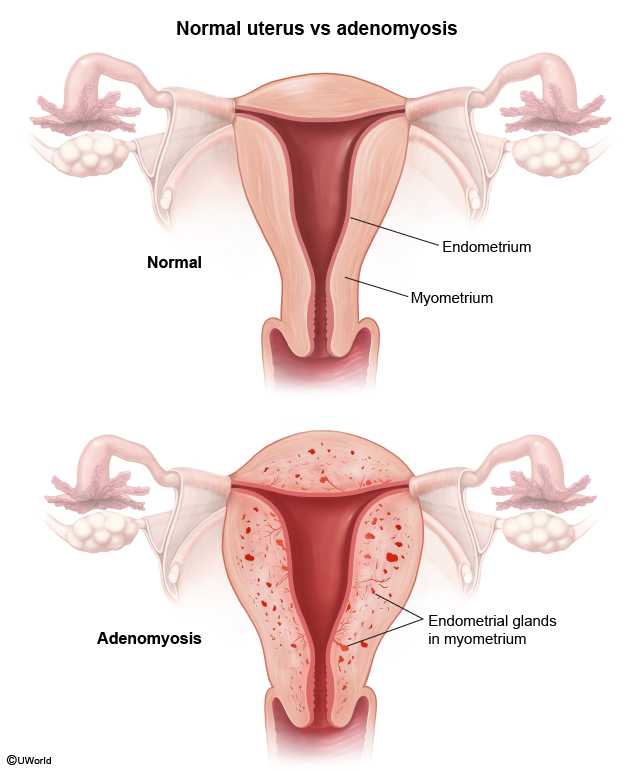
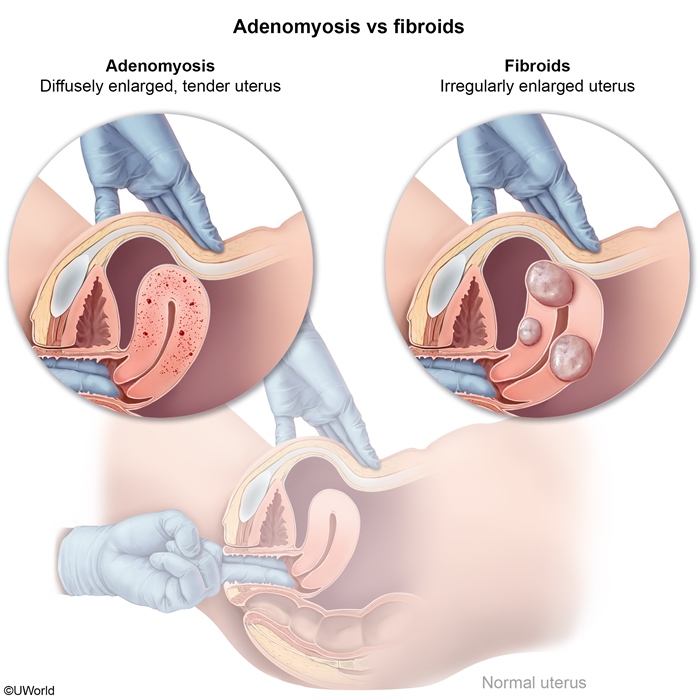
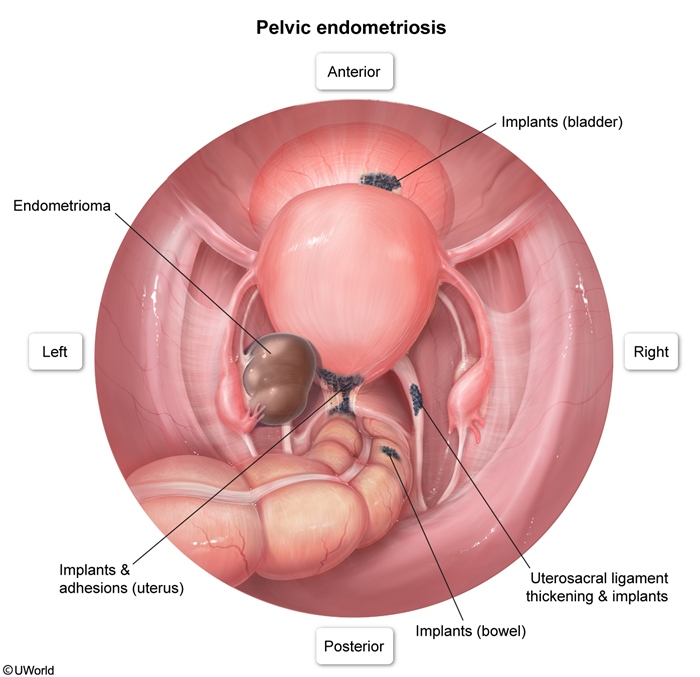
Images
